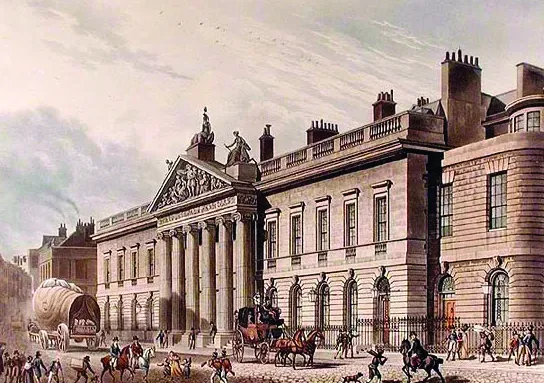On 19 June 2020, Chinese Foreign Ministry spokesperson Zhao Lijian, one of the “wolf-warrior” diplomats, provided what he called a step-by-step account of the Galwan clash which occurred on 15 June. He stated that the Galwan Valley was located “on the Chinese side of the Line of Actual Control in the west section of the China-India boundary”.
While accusing India of “unilaterally building roads, bridges and other facilities in the Galwan Valley region”, Zhao asserted that Galwan has always belonged to China. To understand how false this statement is, it is necessary to look into history.
Hardly two months after Mao solemnly announced the birth of the People’s Republic of China from Tiananmen Square, the People’s Liberation Army (PLA) annexed Xinjiang, closing down the Indian Consulate General in Kashgar in the same stroke. Delhi was told that the new regime wanted to renegotiate all its former agreements, a position untenable in international law.
By taking over Xinjiang, Mao controlled the western borders of the Middle Kingdom and the access to Central Asia. He also came for the first time in contact with the Indian frontiers, particularly the Aksai Chin area, witnessing the present tension.
The capture of Xinjiang, formerly East Turkestan, was perhaps one of the greatest military and strategic feats in modern annals. It is only due to India’s weakness at that time that China could advance its frontier southward.
Soon after the PLA entered Lhasa in September 1951, the Chinese made plans to improve communications and built new roads on a war-footing. One should not forget that in 1950 (when Eastern and Western Tibet were invaded), a caravan from the Chinese border took two months to reach Lhasa, the Tibetan capital. The only way to consolidate and “unify” the Empire was to construct a large network of roads. One of these roads was the Tibet-Xinjiang Highway (today infamously known as the Aksai Chin road).
The first surveys were done at the end of 1951-52 and construction began in 1953-54 and it was eventually inaugurated in July 1957.
In early 1957, the Indian Army selected an officer to go with a patrol and physically confirm the reports that China was building a road in the Aksai Chin area. The officer was Lt Col R.S. Basera of 1 Kumaon Rifles. Later, in a note, Basera’s son wrote: “His mission was to be tough, exciting and most unique, as he had to proceed under cover to the vast plateau of Aksai Chin and confirm reports that the Chinese were constructing a motorable road from Kashgar to Lhasa.”
Disguised as a yak herder, Basera was accompanied by Havildar Diwan Singh from the Corps of Engineers. They were to move with three genuine Ladakhi yak herders. During a briefing at the Headquarters in Leh, Basera was told that it was crucial to maintain utmost secrecy about the mission.
The Military Intelligence (MI) instructed them not to carry any documents that could disclose their identities, no notes should be taken. They were asked to memorise the map and the route: “They had to move in the easterly direction from Leh for about 250-300 km, till they reached the expected location of the new Chinese built road, in Aksai Chin. Initially, they would pass over difficult, undulating terrain, till they crossed the Karakoram Mountain Range and Shyok River,” wrote Basera’s son. Their mission was of national importance, said their handlers in the MI.
After a long and adventurous journey, they finally entered Aksai Chin. On the third day, one of the herders suddenly pulled Basera›s shoulder and showed him a dark line on the horizon; it was the road. They mentally noted every detail of the road that was not yet tarred and rushed back to inform the authorities of their discovery. They were asked to report in Delhi. According to the report of Basera’s son: “The Defence Minister surprisingly supported the Chinese side, and even called it a friendly neighbour. He asked the MI director (DMI), if the area through which the road passed had been confirmed on a map.”
But that was not all, the Prime Minister and the Defence Minister “more or less rebuked the DMI for sending the patrol. The PM told the Defence Minister that no more such patrols were to be sent to Aksai Chin till the matter had been thoroughly investigated,” as such patrols could easily vitiate the ‘good relations’ between friendly neighbours, Jawaharlal Nehru added.
Returning to his post, Lt Col Basera felt utterly dejected: “The long and difficult patrol they had undertaken now appeared to have been a futile, monthlong exercise.”
The History of the Conflict with China, 1962, published by the Indian Ministry of Defence, cited other cases: “In order to ascertain the exact alignment of the road before sending a protest to China, two reconnaissance-cum-survey parties were send out in the summer of 1958; an Army party under Lt Iyengar (from the Madras Sappers) towards the north and an Indo-Tibetan Border Police party under Karam Singh, Deputy Superintendent of Police, towards the southern extremity of the road.”
The official history says: “The Army party did not return because they had been arrested by the Chinese and were released two months later. From the police party, it was learnt that a part the Tibet-Sinkiang highway was definitely in Indian territory.”
There is no doubt that the Indian government had information about the road crossing the Indian territory, as early as the mid-1950s. The greatest tragedy is that there must be hundreds of such files zealously kept in the almirahs of South Block (either in the MEA or the MoD). The “secrecy” is today helping some political parties to criticise the government, overlooking what had happened in the past, with the consequences of what we can see today in Galwan or Hot Springs. Why the present government is not releasing these files is a mystery.
Regarding Zhao’s assertions, there was no Chinese in the Aksai Chin before the mid-1950s; it is probably what China calls ‘time immemorial’.
The writer is a French-born author, journalist, historian, Tibetologist and China expert.























